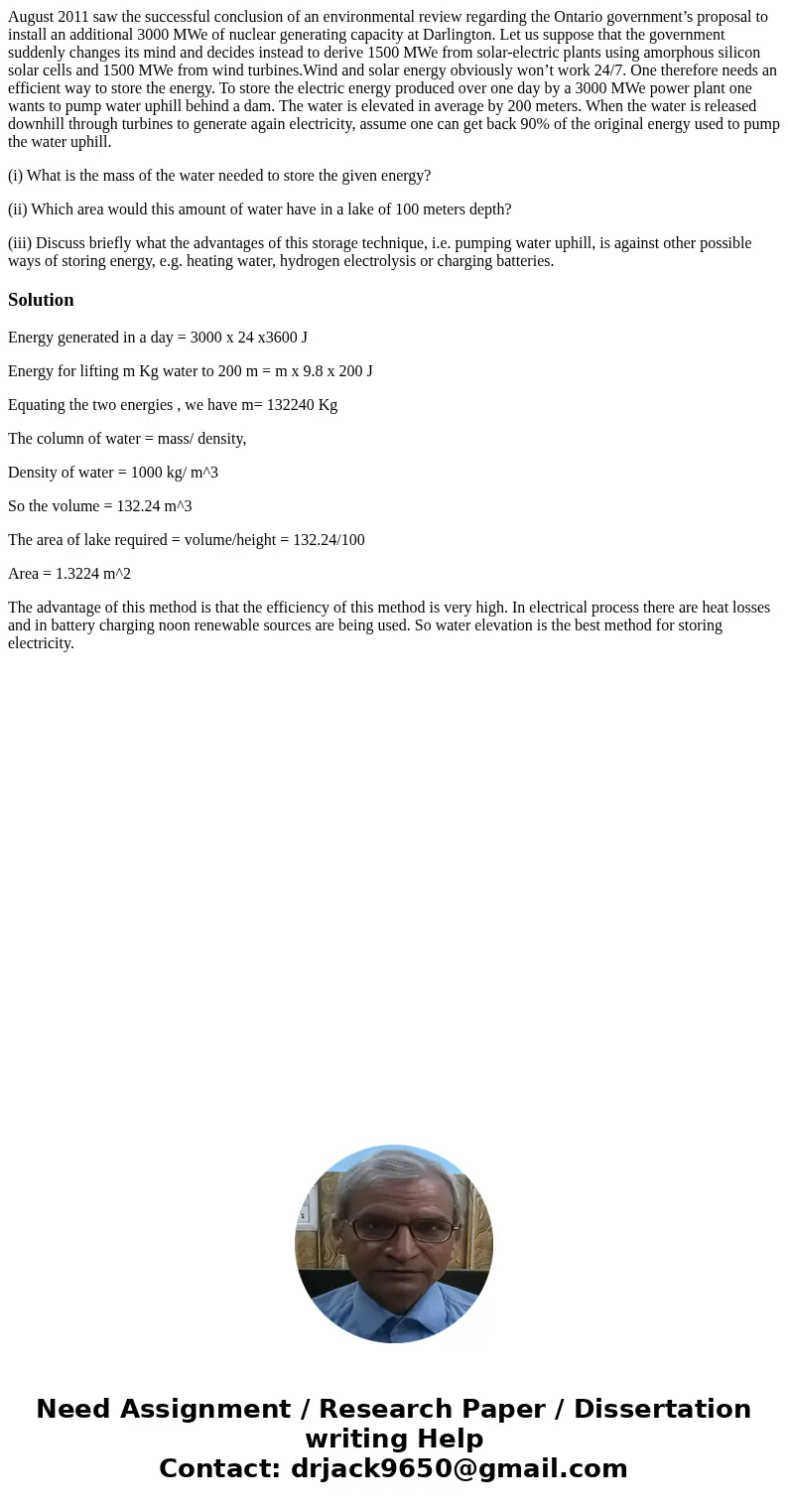August 2011 saw the successful conclusion of an environmenta
August 2011 saw the successful conclusion of an environmental review regarding the Ontario government’s proposal to install an additional 3000 MWe of nuclear generating capacity at Darlington. Let us suppose that the government suddenly changes its mind and decides instead to derive 1500 MWe from solar-electric plants using amorphous silicon solar cells and 1500 MWe from wind turbines.Wind and solar energy obviously won’t work 24/7. One therefore needs an efficient way to store the energy. To store the electric energy produced over one day by a 3000 MWe power plant one wants to pump water uphill behind a dam. The water is elevated in average by 200 meters. When the water is released downhill through turbines to generate again electricity, assume one can get back 90% of the original energy used to pump the water uphill.
(i) What is the mass of the water needed to store the given energy?
(ii) Which area would this amount of water have in a lake of 100 meters depth?
(iii) Discuss briefly what the advantages of this storage technique, i.e. pumping water uphill, is against other possible ways of storing energy, e.g. heating water, hydrogen electrolysis or charging batteries.
Solution
Energy generated in a day = 3000 x 24 x3600 J
Energy for lifting m Kg water to 200 m = m x 9.8 x 200 J
Equating the two energies , we have m= 132240 Kg
The column of water = mass/ density,
Density of water = 1000 kg/ m^3
So the volume = 132.24 m^3
The area of lake required = volume/height = 132.24/100
Area = 1.3224 m^2
The advantage of this method is that the efficiency of this method is very high. In electrical process there are heat losses and in battery charging noon renewable sources are being used. So water elevation is the best method for storing electricity.

 Homework Sourse
Homework Sourse